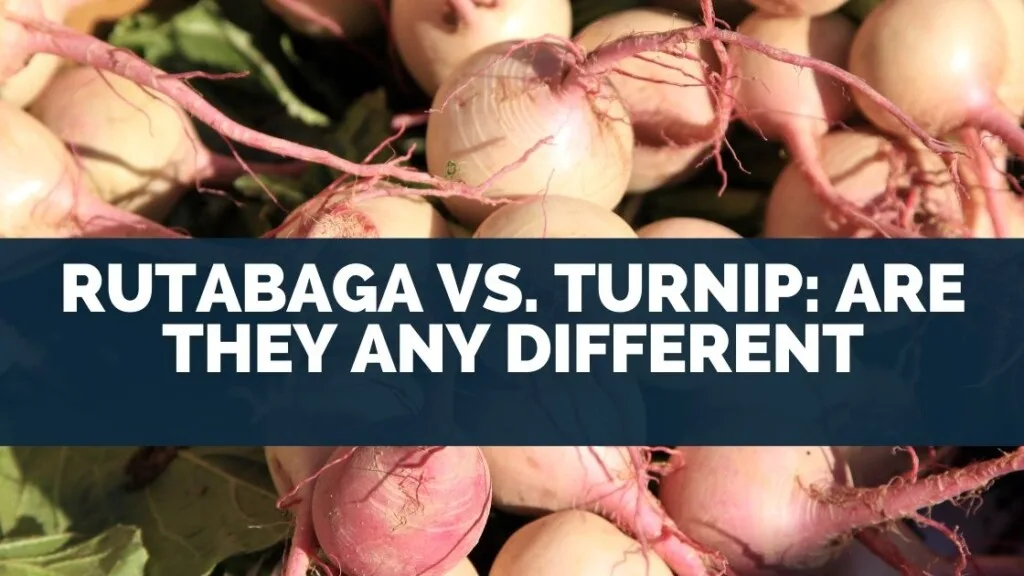
People often wonder what the difference between rutabaga and turnips?
Are rutabagas the same as turnips, but just with a funny name?
Both rutabaga and turnips are root vegetables. Rutabagas are usually larger than turnips.
This is especially true when comparing rutabagas to baby white turnips.
They also have thicker skin, which makes rutabagas unpleasant to eat raw. Rutabagas are usually yellow-orange in color, while turnips are usually white or light purple.
This article will discuss the difference between rutabaga and turnip.
Table of Contents
What is a rutabaga?
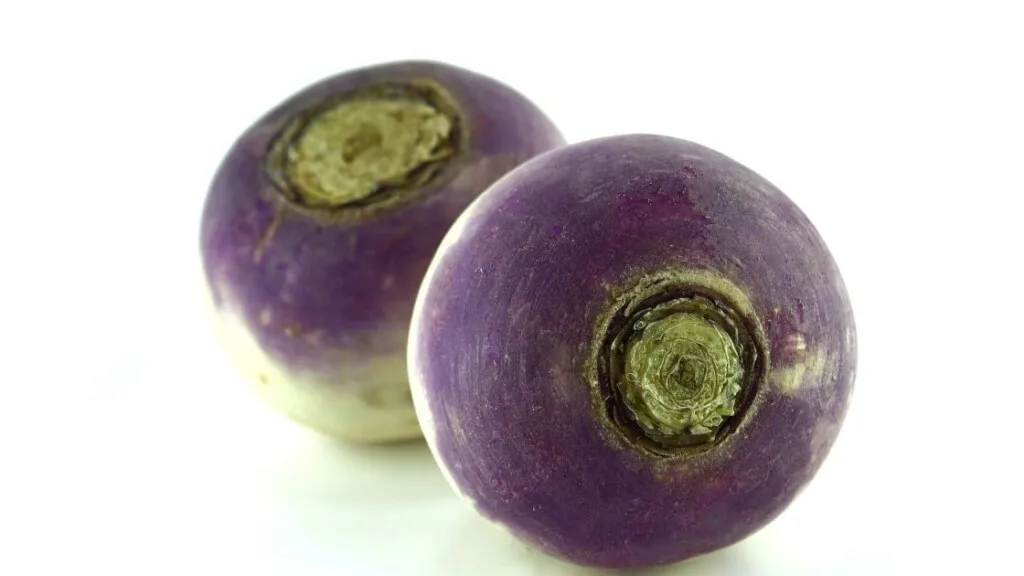
Rutabaga (Brassica napobrassica), also known as Swedish turnip and yellow turnip, is a root vegetable closely related to cabbage. It has been grown in northern Europe since the 16th century.
Rutabagas have a slightly sweet flavor when cooked and are eaten mashed or boiled, especially rutabaga french fries.
In American cuisine, rutabagas are most often cooked before eating, but in European cuisines, rutabagas are also eaten raw as a salad vegetable or grated and made into rutabaga rillettes.
In Russia and Ukraine, rutabagas are used to make raskuska (a rutabaga and cottage cheese dumpling).
Rutabagas are large yellow or orange root vegetables with a waxy texture.
They have a slightly sweet, earthy flavor, and they can be boiled and mashed like potatoes, used as filler in soups and stews, or eaten raw as part of a salad.
What is a turnip?
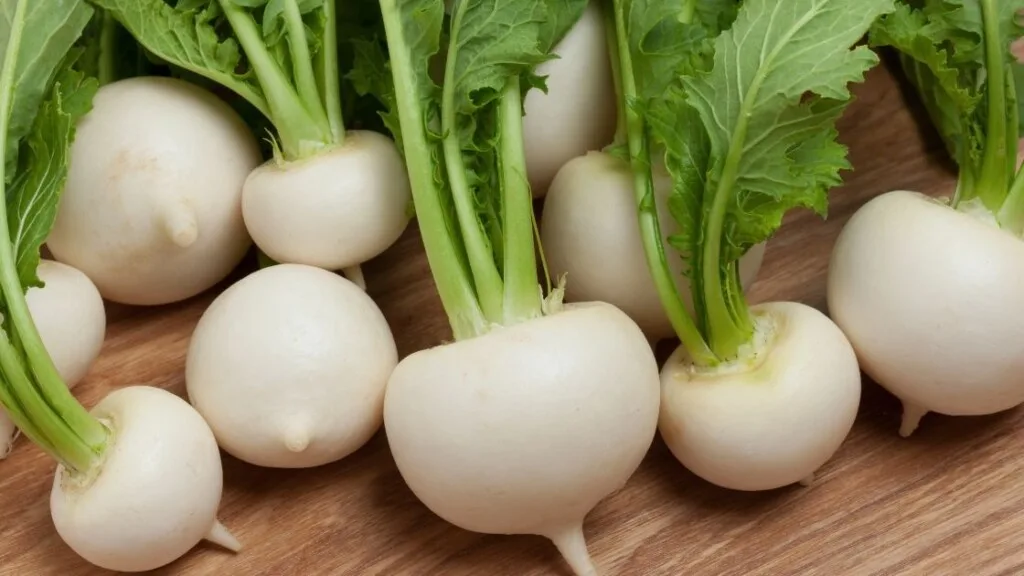
A turnip is a type of vegetable that grows in the ground and is closely related to potatoes and beets.
Radishes and arugula are also part of the Brassica family.
It is possible to eat both the white and purple bulbous taproots as well as the leafy greens.
Turnips are thought to have come from eastern Asia, but they were grown a lot in the Roman Empire and are now grown and eaten all over the temperate world.
Even though turnips are available all year long, they’re at their best in the late summer, early fall, and early spring when the mature vegetables are still crisp and sweet.
Larger and older turnips have tougher skins, which can make them taste bitter and require peeling.
They have a stronger taste than young potatoes, and they’re great for mashing or adding to soups and stews.
Turnips, like most root vegetables, are a hardy and cheap way to keep food on hand through the winter.
What is the difference between rutabagas and turnips?
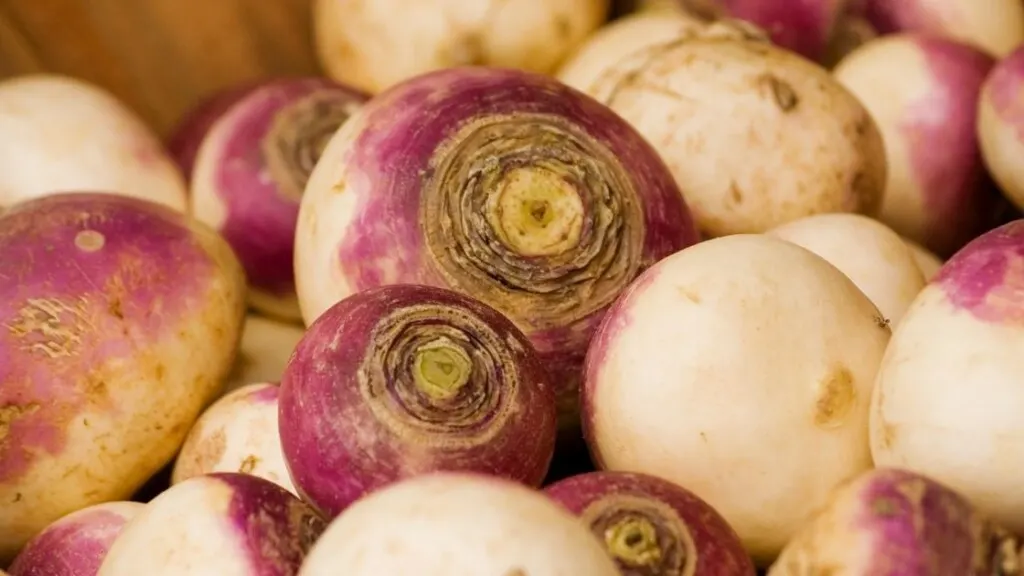
Rutabagas and turnips (also called white turnips) are related plants that look and feel the same, but they are different species. The following are some differences between the two root vegetables:
Coloring
Turnips have a purple top and a white skin with white flesh, whereas rutabagas have yellow skin with purple and yellow flesh flecks.
Family
Brassicaceae, which is short for Brassica, is a group of vegetables that includes turnips and rutabagas. They are two separate species, Brassica rapa (turnips) and Brassica napus (rutabagas) (rutabagas). Radishes (Raphanus raphanistrum), cabbages (Brassica oleracea), and rapeseed are all part of the Brassica family (Brassica napus).
Nutrition
Both white turnips and rutabagas have yellow flesh that is high in dietary fiber and vitamin C. They are low in calories and can help protect against cardiovascular disease, rheumatoid arthritis, cancer, diabetes, asthma, inflammation, obesity.
Preparation
Whether you peel rutabagas or turnips with a vegetable peeler is up to you, but it’s a good idea to use one. When you’re making mashed rutabaga or turnip meal, you might want to use a peeler, like you would with mashed potatoes.
There should be no leaves on rutabaga or turnip leaves if you’re just putting them in the crisper.
Turnip and rutabaga greens, on the other hand, can be eaten on their own as a salad.
Taste
Rutabagas and turnips have a flavor that is very similar when cooked, but rutabagas are slightly sweeter. Additionally, they have tougher leaves that must be removed before the rutabagas can be cooked correctly.
Usage
When rutabagas and turnips are done growing, you can use them in stews and casseroles with other vegetables, like beets and parsnips, to make the food even tastier.
They also make great roulades or can be cut into sticks and roasted.
Appearance
Turnips (also known as Brassica rapa in more esoteric circles) are characterized by their white flesh and white (or white and purple) skin.
Rutabagas, which are also called Brassica napobrassica, have yellow flesh and yellow or brown skin.
They are also called Brassica napobrassica. When it comes to food, there are also yellow-fleshed turnips and white-fleshed rutabagas, but they are less common.
This is another way to tell them apart at the grocery store.
When it comes to size, turnips are less than half the size of rutabaga potatoes. They are usually picked when they are small because turnips can grow very large and become woody.
In order to choose the best vegetable from the bunch, look for ones that are strong and big for their size. Choose the ones with the most colorful leaves.
Turnips and rutabagas have edible stems that should be kept separate if they are to be eaten.
Final thoughts
To summarize, rutabagas and turnips are in the same plant family but have different species.
Rutabagas tend to be sweeter than turnips, and they are nice and heavy for their size, with a fresher-looking stem.
Turnips can grow quite large, but they’re usually harvested when small and tender with white flesh and white-or purple-colored skin.
Both rutabagas and turnips taste similar when cooked and can be used in many recipes.

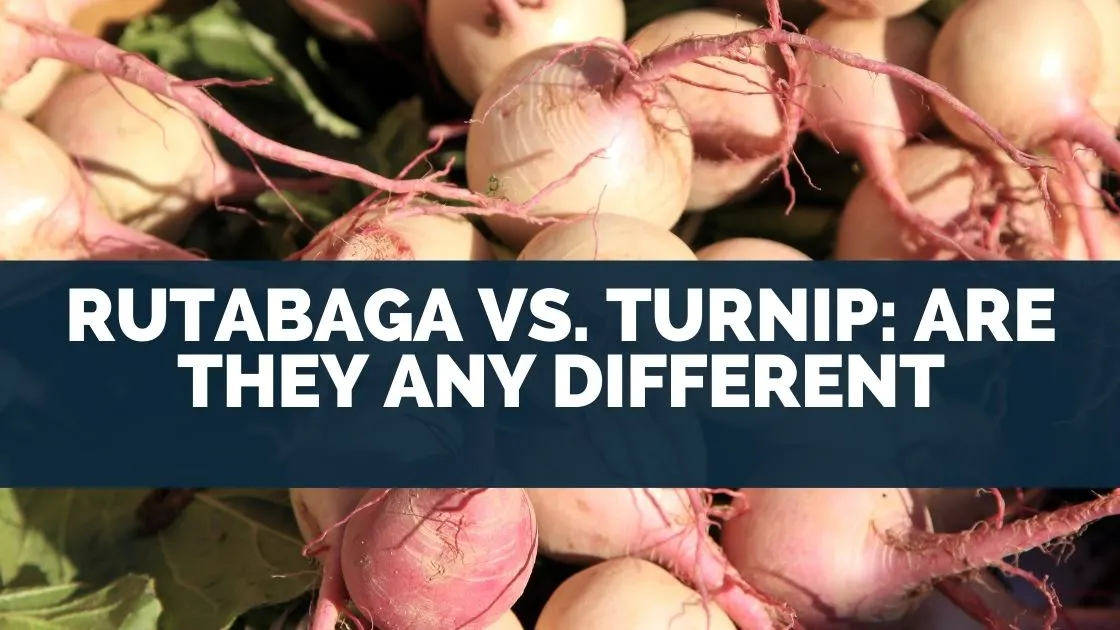
Leave a comment